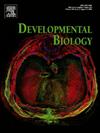Retinoic acid promotes second heart field addition and regulates ventral aorta patterning in zebrafish
IF 2.5
3区 生物学
Q2 DEVELOPMENTAL BIOLOGY
引用次数: 0
Abstract
Retinoic acid (RA) signaling is used reiteratively during vertebrate heart development. Its earliest known role is to restrict formation of the earlier-differentiating first heart field (FHF) progenitors, while promoting the differentiation of second heart field (SHF) progenitors that give rise to the arterial pole of the ventricle and outflow tract (OFT). However, requirements for RA signaling at later stages of cardiogenesis remain poorly understood. Here, we investigated the role of RA signaling after the later differentiating SHF cells have begun to add to the OFT. We found that inhibiting RA production in zebrafish beginning at 26 hours post fertilization (hpf) produced embryos that have smaller ventricles with fewer ventricular cardiomyocytes, and reduced number of smooth muscle cells in the bulbus arteriosus (BA) of the OFT. Our results suggest that the deficiency of the ventricular cardiomyocytes is due to reduced SHF addition to the arterial pole. In contrast to smaller ventricles and BA, later RA deficiency also results in a dramatically elongated posterior branch of the adjacent ventral aorta, which is surrounded by an increased number of smooth muscle cells. Altogether, our results reveal that RA signaling is required during the period of SHF addition to promote addition of ventricular cardiomyocytes, partition smooth muscle cells onto the BA and posterior ventral aorta, and to establish proper ventral aorta anterior-posterior patterning.

求助全文
约1分钟内获得全文
求助全文
来源期刊

Developmental biology
生物-发育生物学
CiteScore
5.30
自引率
3.70%
发文量
182
审稿时长
1.5 months
期刊介绍:
Developmental Biology (DB) publishes original research on mechanisms of development, differentiation, and growth in animals and plants at the molecular, cellular, genetic and evolutionary levels. Areas of particular emphasis include transcriptional control mechanisms, embryonic patterning, cell-cell interactions, growth factors and signal transduction, and regulatory hierarchies in developing plants and animals.
 求助内容:
求助内容: 应助结果提醒方式:
应助结果提醒方式:


